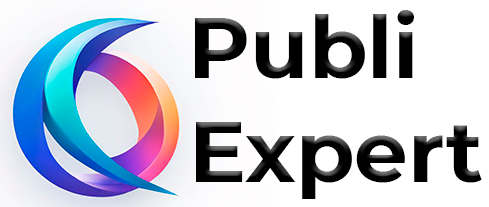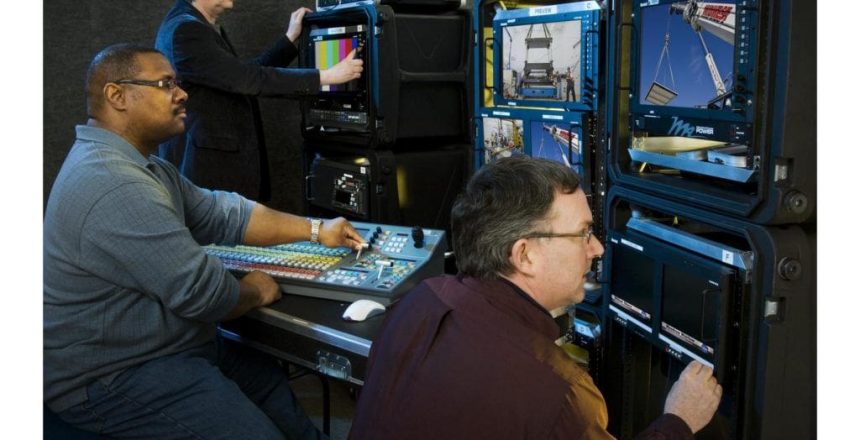In the age of AI, video editing has undergone a significant transformation, revolutionizing the way brands tell stories. With the advent of automated editing and the integration of AI technologies, video editing has become more efficient, creative, and accessible than ever before. This article explores the evolution of video editing, the enhancements AI brings to storytelling, the AI-driven video editing tools available, and the future possibilities of AI-generated video content. Here are the key takeaways:
Key Takeaways
- AI-powered video editing tools have revolutionized the industry, making editing more efficient and accessible.
- AI-generated transitions and effects enhance storytelling by adding visual interest and creativity to videos.
- Automated scene detection and organization save time and effort for editors, allowing them to focus on the creative aspects of editing.
- Emotion recognition technology can analyze facial expressions and body language to enhance the emotional impact of videos.
- The future of video editing lies in the collaboration between AI and human editors, combining the efficiency of AI with the creativity and intuition of humans.
The Evolution of Video Editing

From Manual to Automated Editing
Video editing has come a long way from the days of manual editing, where every cut and transition had to be done by hand. With the advent of AI technology, the process of editing videos has been revolutionized. AI-powered editing tools have made it possible to automate many aspects of the editing process, saving time and effort for video editors.
One of the key advantages of automated editing is the ability to quickly generate multiple versions of a video. By using AI algorithms, editors can easily experiment with different cuts, transitions, and effects to find the best combination that tells the story effectively. This not only speeds up the editing process but also allows for more creative exploration.
In addition to saving time, AI-driven editing also brings challenges. One of the main challenges is ensuring that the AI algorithms understand the context and emotions of the video. While AI can analyze the content of the video, it may not always capture the subtle nuances and emotions that a human editor can. Therefore, it is important for editors to review and fine-tune the AI-generated edits to ensure the desired storytelling effect is achieved.
The Impact of AI on Video Editing
AI has revolutionized the field of video editing, transforming the way brands tell stories. With AI-powered algorithms and machine learning techniques, video editing has become faster, more efficient, and more precise. Automated editing processes have significantly reduced the time and effort required to edit videos, allowing editors to focus on the creative aspects of storytelling. AI has also introduced new possibilities for enhancing the visual appeal of videos through AI-generated transitions and effects. These automated effects can add a professional touch to videos, making them more engaging and captivating for viewers.
Advantages and Challenges of AI-Driven Editing
AI-driven editing offers numerous advantages for brands and content creators. One of the key benefits is the ability to automate repetitive tasks, such as video trimming and color correction, saving time and effort. AI can also analyze large amounts of data to identify patterns and trends, helping editors make more informed decisions. Additionally, AI-powered editing software can enhance the overall quality of videos by automatically adjusting lighting, removing background noise, and applying visual effects.
However, there are also challenges associated with AI-driven editing. Privacy concerns arise when AI algorithms analyze and process personal data, such as facial recognition for emotion detection. Another challenge is the potential loss of human touch and creativity in the editing process. While AI can automate certain tasks, it may struggle to replicate the artistic vision and intuition of human editors. Striking the right balance between AI automation and human creativity is crucial for successful video editing.
Enhancing Storytelling with AI

AI-Generated Transitions and Effects
AI-generated content for video editing and post-production is revolutionizing the way brands tell stories. With the power of AI, video editors can now create stunning transitions and effects that were once time-consuming and labor-intensive. For example, AI can generate new animations or special effects, create seamless transitions between clips, and even add or remove objects from a scene.
Automated Scene Detection and Organization
Automated scene detection and organization is a powerful feature offered by AI-driven video editing tools. This technology allows editors to quickly identify and separate different scenes within a video clip. By automatically detecting scene changes, editors can save time and effort in manually identifying and cutting scenes. This feature is particularly useful when working with long videos or footage with multiple scenes. With AI-powered editing software, editors can easily navigate through the video and make precise edits at the scene level.
Emotion Recognition for Enhanced Storytelling
Emotion recognition technology is revolutionizing the way brands tell stories. By analyzing facial expressions, body language, and vocal cues, AI can identify and understand the emotions of viewers. This valuable data can then be used to create more engaging and personalized content. Emotion recognition allows brands to tailor their storytelling to evoke specific emotions in their audience, whether it’s excitement, empathy, or nostalgia.
One of the key benefits of emotion recognition in video editing is the ability to measure the emotional impact of a story. Brands can use this data to gauge the effectiveness of their content and make adjustments to optimize engagement. Additionally, emotion recognition can help brands identify trends and patterns in audience reactions, allowing them to create more targeted and impactful storytelling.
Incorporating emotion recognition into video editing workflows can also streamline the editing process. AI algorithms can automatically analyze footage and identify emotional moments, making it easier for editors to select the most impactful scenes. This saves time and effort, allowing editors to focus on crafting compelling narratives.
- Emotion recognition technology enables brands to create more personalized and emotionally resonant content.
- By analyzing viewer emotions, brands can measure the effectiveness of their storytelling and make data-driven adjustments.
- AI algorithms can streamline the editing process by automatically identifying emotional moments in footage.
Tip: When using emotion recognition in video editing, it’s important to strike a balance between evoking emotions and respecting the privacy and consent of viewers.
AI-Driven Video Editing Tools

AI-Powered Editing Software
AI-powered editing software is revolutionizing the way video content is created and edited. With the advancements in artificial intelligence, editors now have access to powerful tools that can automate various aspects of the editing process. These software solutions leverage machine learning algorithms to analyze and understand video content, making it easier for editors to make precise edits and enhancements.
One of the key benefits of AI-powered editing software is its ability to speed up the editing workflow. By automating tasks such as scene detection, video stabilization, and color correction, editors can save a significant amount of time and focus more on the creative aspects of storytelling.
Additionally, AI-powered editing software offers advanced features like AI-generated transitions and effects. These tools can analyze the content of the video and generate visually appealing transitions and effects that enhance the overall viewing experience.
Overall, AI-powered editing software is empowering editors to create high-quality videos more efficiently and effectively.
Cloud-Based Video Editing Platforms
Cloud-based video editing platforms have revolutionized the way brands create and edit videos. These platforms offer a range of powerful features and tools that enable users to edit videos online, collaborate with team members, and access their projects from anywhere. With cloud-based video editing platforms, brands can streamline their video editing workflow and improve efficiency.
AI-Integrated Video Editing Hardware
AI-integrated video editing hardware is revolutionizing the way professionals edit videos. These advanced hardware systems are designed to work seamlessly with AI-powered editing software, providing users with enhanced capabilities and efficiency.
One of the key advantages of AI-integrated video editing hardware is its ability to handle complex video processing tasks in real-time. With powerful processors and dedicated AI chips, these hardware systems can quickly analyze and process large amounts of video data, allowing editors to make real-time adjustments and improvements.
In addition, AI-integrated video editing hardware often includes specialized interfaces and controls that are optimized for AI-driven workflows. This enables editors to easily interact with AI algorithms and tools, making the editing process more intuitive and efficient.
Overall, AI-integrated video editing hardware is a game-changer for professionals in the industry. It empowers editors with powerful tools and capabilities, enabling them to create high-quality videos with greater speed and precision.
The Future of Video Editing

AI-Generated Video Content
AI-generated video content is revolutionizing the way brands create and share videos. With the advancements in artificial intelligence, brands can now easily generate high-quality videos without the need for extensive manual editing. AI video generators use sophisticated algorithms to analyze and understand the content, allowing them to create videos that are tailored to the brand’s specific needs and target audience. These AI-generated videos can be used for various purposes, including marketing campaigns, product demonstrations, and storytelling.
Collaboration between AI and Human Editors
Collaboration between AI and human editors is a key aspect of the future of video editing. While AI-driven editing tools have the ability to automate many aspects of the editing process, human editors bring their creativity and intuition to the table. The combination of AI and human expertise can result in videos that are both technically flawless and emotionally impactful.
Ethical Considerations in AI-Driven Editing
Addressing biases in AI algorithms is another crucial ethical consideration. AI systems, including video systems, trained on biased data can perpetuate harmful stereotypes and discrimination. It is important for video editors to be aware of these biases and take steps to mitigate them. This can include using diverse and representative datasets, regularly evaluating and updating the AI models, and involving human editors in the decision-making process. By being mindful of ethical considerations, AI-driven editing can be used responsibly to create inclusive and unbiased video content.
The future of video editing is constantly evolving, with new technologies and techniques emerging every day. As the demand for high-quality video content continues to grow, video editors are faced with the challenge of keeping up with the latest trends and tools. At Home | PubliExpert, we understand the importance of staying ahead in the world of video editing. Our team of experts is dedicated to providing you with the skills and knowledge you need to maximize your social networks engagement and online visibility. Whether you’re a professional video editor or just starting out, we have the resources and training programs to help you succeed. Visit our website today to learn more and get started on your journey to becoming a video editing pro.
Conclusion
In conclusion, the advent of AI in video editing has revolutionized the way brands tell stories. With the ability to analyze vast amounts of data and automate repetitive tasks, AI has made the editing process faster and more efficient. Brands can now create compelling and personalized videos that resonate with their target audience. However, it is important to remember that while AI can enhance creativity and productivity, it cannot replace human intuition and artistic vision. The future of video editing lies in the collaboration between AI and human editors, combining the power of technology with the human touch to create truly captivating stories.
Frequently Asked Questions
What is AI-driven video editing?
AI-driven video editing refers to the use of artificial intelligence technology to automate and enhance various aspects of the video editing process. It involves the use of algorithms and machine learning techniques to perform tasks such as scene detection, organization, transitions, effects, and more.
What are the advantages of AI-driven video editing?
AI-driven video editing offers several advantages, including increased efficiency and productivity, improved accuracy and consistency, enhanced creativity and storytelling capabilities, and the ability to automate repetitive tasks. It can also help save time and resources by reducing manual labor and speeding up the editing process.
What are the challenges of AI-driven video editing?
While AI-driven video editing has many benefits, it also comes with its own set of challenges. These challenges include the need for high-quality training data, potential biases in AI algorithms, the risk of overreliance on automation, and the ethical considerations surrounding the use of AI in creative industries.
What are AI-generated transitions and effects?
AI-generated transitions and effects are visual elements that are automatically generated by artificial intelligence algorithms. These can include smooth transitions between scenes, dynamic visual effects, color grading, and more. AI algorithms analyze the content of the video and apply predefined or learned patterns to enhance the visual experience.
How does automated scene detection and organization work?
Automated scene detection and organization is a feature of AI-driven video editing tools that automatically analyzes the video footage and identifies different scenes based on visual and audio cues. It then organizes the footage into separate clips or segments, making it easier for editors to navigate and work with the material.
What is emotion recognition in video editing?
Emotion recognition in video editing is the use of AI technology to analyze facial expressions, body language, and other visual and audio cues to determine the emotional content of a video. This information can then be used to enhance storytelling by adjusting the pacing, music, and visual elements to create a more engaging and emotionally impactful experience.





